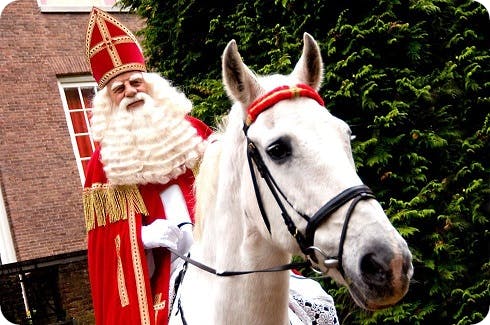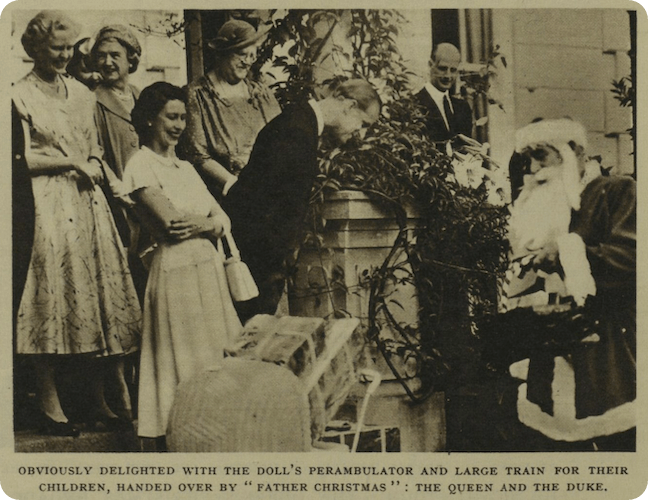How old is Santa Claus?: Santa's family tree goes back further than you might think
5-6 minute read
By Daisy Goddard | December 7, 2023

From Saint Nicholas to Mrs Clause, we've delved into the origins of everyone's favourite festive figure. Discover Christmas joy through the decades, with Santa Claus' family story.
No matter where you are each year during December, you'll see countless images of Santa Claus as we usher in another Christmas season. Also known as Saint Nick, Kris Kringle, Father Christmas and more, the white-bearded man in a red suit is a Christmas mainstay. But did you ever stop to think about where Santa actually came from?
We decided to do a little festive digging into the origins of Santa Claus and the folklore family members that contributed to how we imagine Father Christmas today. Read on to check out who we rounded up and put into Santa's family tree...
Although families typically come together each Christmas, family history is an exciting journey that can be embarked on all year round. Simply start with the key details that you know about your ancestors, and build out your research from there. Why not download our festive free family tree template today?
From our favourite Christmas traditions to the origins of the Christmas tree, delve even further into festive stories from history with the Findmypast blog.
Saint Nicholas
Saint Nicholas was a 4th-century Greek bishop who was famous for aiding the poor. In a well-known tale of Saint Nick's exploits, he supplied a family with dowry payments for their three daughters with his own inheritance.
In a secret night-time visit, Saint Nicholas dropped three bags of gold coins into three stockings hung by the fire to dry (in later versions he snuck down the chimney), allowing the daughters to find suitable matches and preventing the family from shame and misfortune.

Saint Nicholas Icon, Holy Trinity Church, Halki seminary.
This tale seems to have given rise to St Nicholas's reputation as a gift-giver. In Medieval Europe, children were given gifts the night before St Nicholas' Day, December 6, and his name has now become synonymous with Santa Claus and generous gift-giving on Christmas Eve night.
'Twas the night before Christmas...
Saint Nick's celebrity status was further cemented by a poem written by Clement Clarke Moore in 1832. First published anonymously,Account of a Visit from St. Nicholasremains popular almost 200 years on.

Clement Clarke Moore's Account of a Visit from St. Nicholas, published in The Queen, 21 December 1861. View this page.
In various European cities and countries, Saint Nicholas is the patron saint of merchants, sailors, archers, brewers, children and more.
Odin
You might be surprised to see the fearsome Norse God Odin on this list, but looking at his long white beard in the below picture, his connection to Santa may not seem so far-fetched after all.

Odin the Wanderer, Georg von Rosen, 1886.
As you can see, there was little visual resemblance between St. Nicholas and Santa Claus, but the modern-day image of Santa was clearly influenced by Odin. Before the Christianization of the German people, they celebrated a midwinter holiday called Yule. Many traditions of this holiday were absorbed into Christmas to encourage participation.
Like our Santa Claus, Odin rode through the sky during the Yule season on a giant equine - the gray 8-hooved horse Sleipnir can be considered a predecessor to the Santa's reindeer. Odin's long white beard and gift-giving tendencies were also emphasized in Yuletime lore.
Sinterklaas
In many ways, the Dutch mythical figure Sinterklaas is a combination of St. Nicholas and Odin. Sinterklaas also refers to the annual gift-giving holiday in the Netherlands, which takes place either the day before or morning of St. Nicholas' day (December 6), depending on the region.

Sinterklass is an elderly man with long white hair who wears a long red cape and rides a white horse. Just as Santa Claus arrives in a sleigh at the end of December, Sinterklaas traditionally arrives on a steamboat from Spain every year around mid-November, a nationally televised event in the Netherlands.
Another trait Sinterklass shares with Santa Claus is an early version of the naughty or nice list. Sinterklaas carries a book in his hand that contains behavioral records of all children over the past year.
Father Christmas
We can think of Father Christmas as a distant, perhaps even long-lost cousin to Santa Claus. Father Christmas has been around since the 17th century and is traditionally the symbol of the adult celebration of Christmas - feasting, and drinking. Though he doesn't share the gift-giving tendencies of Santa Claus or his more direct forefathers, Father Christmas shared the task of ushering in the holiday season in centuries past.

Father Christmas.
Father Christmas' origins lie in 17th century England when Puritans were rallying against many forms of Christmas merriment. In the many debates, proponents of a more liberal Christmas celebration would often personify Christmas as a warm, kind man who was receptive to having a good time, but not prone to overdoing it.

Queen Elizabeth meeting Father Christmas. Illustrated London News, 9 January 1954. View this page.
He remained a mascot of restrained revelry until the mid 19th century when he slowly began to be overtaken by and confused with Santa Claus.
Mrs. Claus (Mother Christmas)
Mrs. Claus may not be an ancestor of Santa but she's certainly in his family tree. Mrs. Claus made her first appearances in American literature in the mid-19th century.

She was mentioned only in passing until closer to the early 20th century but is now a key part of the legend of Santa Claus in popular culture.
Does Santa have any children?
Although Santa and Mrs Claus almost never have children in any of their many depictions, there is at least one Christmas Burlesque musical from 1892 that features Kitty Claus, the daughter of Santa. Funnily enough, we find a few mentions of Kitty in our newspaper collection.

A local Christmas play featuring the character of Kitty Claus. Hertford Mercury and Reformer, 8 December 1950.
Not surprisingly, it wasn't a classic. It looks like Santa's family tree ends with him and Mrs Claus for now.
Was Santa Claus created by Coca Cola?
Before the 1930s, Santa was depicted in many different ways, conforming to the different styles and appearances that we've explored above. But in the United States in 1931, Cola Cola illustrator Haddon Sundblom created iconic artworks that depicted Santa as the rosy-cheeked, jolly man in red that we all recognise today.
Coca Cola thus played an important role in shaping modern representations of Santa Claus - however, the tradition of Santa has a far longer global history. Santa's family tree is far more complex than you might expect.




